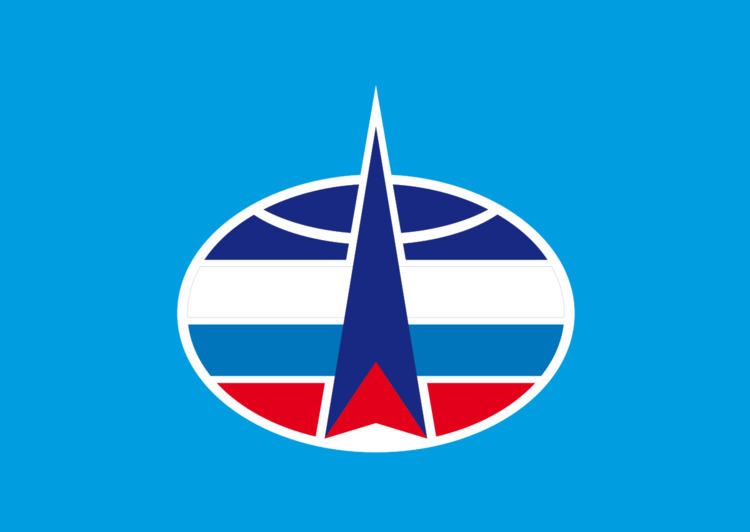Country Russia Type Aerospace Defence | ||
 | ||
Active 1992 – 19972001 – 20111 August 2015 – present Size 150,000 personnel (2014) Anniversaries 4 October (Space Forces Day) | ||
The Russian Space Forces (Russian: Космические войска России, Kosmicheskie Voyska Rossii) are a branch of the Russian Aerospace Forces, having been reestablished following the 1 August 2015 merger between the Russian Air Force and the Russian Aerospace Defence Forces after a 2011 dissolving of the branch. The Russian Space Forces were originally formed on the 10 August 1992, following the breakup of the Soviet Union and the creation of the Russian Armed Forces. The organisation shared control of the Baikonur Cosmodrome with the Russian Federal Space Agency. It also operated the Plesetsk and the Svobodny Cosmodromes. However the Russian Space Forces were dissolved in July 1997 and incorporated into the Strategic Missile Troops.
Contents
The Russian Space Forces were once again reformed as an independent troop on the 1 June 2001 under a military reorganisation. However, by December 2011, it was dissolved once again and this time replaced by the Russian Aerospace Defence Forces.
On 1 August 2015, the Russian Air Force and the Russian Aerospace Defence Forces were merged to form the Russian Aerospace Forces. The Russian Space Forces were reestablished as a result, and are now one of three sub-branches of the new armed force.
History
In 1967 the Troops of Anti-Missile and Anti-Space Defence was formed (Russian: войска противоракетной и противокосмической обороны [ПРО и ПКО], tr. Voyska Protivoraketnoy i Protivokosmicheskoy Oborony [PRO i PKO]) under General-Lieutenant of the Artillery Yu. Votintsev. They were reorganised as the Ministry of Defence Space Units in 1982. In 1991 the Soviet Union was broken up. The Armed Forces of the Russian Federation were established on May 7, 1992, enabling the creation of Russian Space Forces later that year on August 10.
In July 1997 the Space Force was dissolved as a separate service arm and incorporated to the Strategic Rocket Forces along with the Space Missile Defence Forces (Russian: Ракетно-космическая оборона), which previously were part of the Soviet Air Defence Forces. In the view of some experts, this was a mistake that prevented the Russian military from developing space-based capabilities. Russian Public TV said of the merger:
However, slightly over three years ago, it appeared to some-one, that, with a view to saving funds, it would be more sensible to strip the Military Space Forces of their independence and subordinate them to the Strategic Missile Troops -which has been done. In just the same way the country's air defence forces were made subordinate to the air force.
Under the slogan of "optimizing", but, essentially, reducing the officer corps of the armed forces, the Military Space Forces were simply merged with the Strategic Missile Troops. In this way the missilemen command remained in their places virtually in full and almost the entire elite of military engineers were dispersed from the space forces. The military base, too, was destroyed. In the building of the Military Space Forces headquarters on Kaluga Square [Kaluzhskaya ploshchad], the very expensive fibre optic cable necessary for communicating with space facilities was ripped out. Afterwards, this decision was deemed to have been erroneous.
The Russian Space Forces were officially reborn on June 1, 2001 as an independent section of the Russian military. They regained independence under one of the many military reorganisation plans of the mid-late 1990s. Colonel General Anatoly Perminov was appointed to lead the new Space Forces. He was succeeded by General Vladimir Popovkin in 2004 and General Oleg Ostapenko in 2008 until dissolution in 2011.
On the 1 August 2015, the Space Forces were reestablished as part of the Russian Aerospace Forces..
Structure
The main tasks of the Russian Space Forces are informing the higher political leaders and military commanders of missile attacks as soon as possible, ballistic missile defence, and the creation, deployment, maintenance and control of in-orbit space vehicles, like the new Persona reconnaissance satellite. For example, the Space Forces operate the GLONASS global positioning system; commander of the Space Forces Colonel General Vladimir Popovkin said in January 2006 that 18 GLONASS satellites would be in orbit by 2008, In October 2010 the system became fully operational.
Formations of the Space Forces included the 3rd Missile-Space Defence Army, and a Division of Warning of Missile Attack, both with their headquarters at Solnechnogorsk near Moscow. Installations include the Qabala Radar in Azerbaijan, along with a number of other large warning radars, and the A-135 anti-ballistic missile system which protects Moscow.
There is also an optical tracking facility, the Okno (Window) complex near the town of Nurek in central Tajikistan that is intended to monitor objects in space. The Okno is capable of tracking objects 40,000 kilometers (25,000 mi) from Earth, the space forces said when it was put on duty in 2002. The facility involves telescope-like equipment housed in several large spheres, similar to the U.S. GEODSS system.
